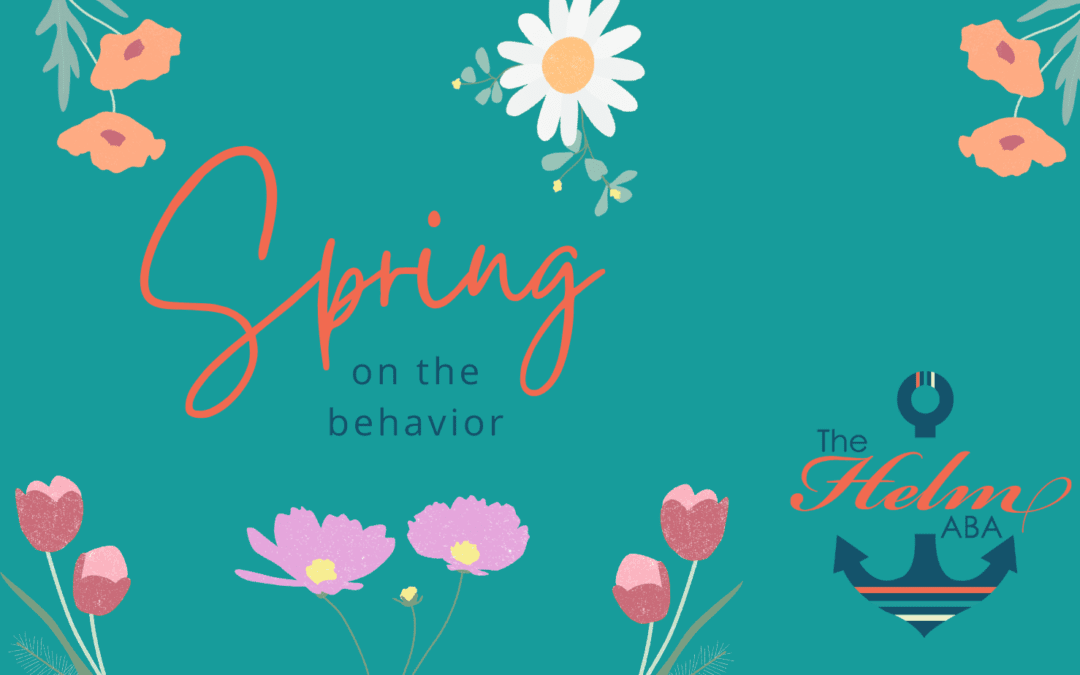Ah, Spring! Birds chirping, flowers blooming, one of the two good weather months of the Texas year. What could be better? Except for a lot of us, Spring also means an increase in our child’s behavior. Why does that happen, and what can we do about it?
Spring Fever
We’ve all heard the term Spring Fever, but what exactly is the cause of higher energy, less self control, and for some, increase in aggression or tantrums? Well, there isn’t one answer. It is likely a variety of interconnected factors including:
aggression or tantrums? Well, there isn’t one answer. It is likely a variety of interconnected factors including:
- Increased daylight hours
- Change in sleep routine
- Warmer temperatures
- Major life events (such as school ending)
- Change in behavior patterns of those around us
Some even speculate that histamine increases in air due to plants budding and blooming has an effect on general behavior. While this is not scientifically proven, it is an interesting theory that could pan out with more research.
Why do those things affect our kids?
Some of this is relatively obvious. Change in sleep routines, for example, makes perfect sense. Our bodies yearn for a rhythm. When that rhythm is disrupted, it is rarely positive.
Other things on our list like warmer temperatures and more daylight hours are actually the cause of the last item on the list, change in behavior patterns of those around us. As Spring sets in, almost all people are more likely to change their habits. More time outside, a desire to exercise, and change of diet.
In addition, we seem to have an innate urge to reset in the Spring. Cleaning your house, throwing things away or donating underused items. Just like plants, we have a desire to start anew in the Spring.
And while all of that is great, our change, even for the better, disrupts the routines of our little ones. Our new behaviors bring on new behaviors (or amps up old behaviors) in them, too.
That isn’t to say you shouldn’t embrace the change. By all means, start going for evening walks or eat more greens. But be aware that a behavior shift in these warmer months is possible and perhaps even likely.
What can we do about it?
First things first, expect it. If you know it’s coming, the behavior changes are easier to deal with. Beyond that, there are two big actions to be taken.
Find routine in your new routine. The sooner your new habits become a routine, the sooner your child will become familiar with them. So if you’re going to start gardening, try to make sure your kiddo knows when it’s coming and how often. We’d all love to be spontaneous, but planning out the time will help your kids adapt to the change.
Sleep is still a priority. It isn’t easy to enforce an early bedtime when the sun is still peaking through the window of the bedroom. It isn’t easy, but it’s absolutely necessary. Do what you can to ensure bedtime remains consistent. Maybe that means buying blackout curtains or a sleep mask if your kiddo will wear it. It definitely means talking to them about Daylight Saving Time, and explaining that the sun doesn’t put them to bed, the clock does. Do whatever you need to do to make sure they (and you) stay on a healthy sleep routine.
That won’t fix everything
It is important to remember, however, that no matter what you do, you can’t control all the change that is happening around your child. School may feel different, other kids might not have incredible parents like you who take the time to maintain their routines, or the change in weather may just have a big effect on your kiddo. All you can do is try your best and remind yourself of that. Behavior might increase, and that is never easy, but you’ve gone through Spring before, and you can do it again!\
As always, if you have any questions or need more help, please don’t hesitate to reach out to us at The Helm!

